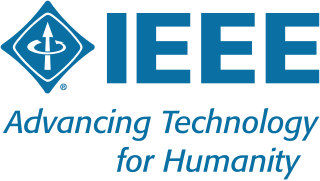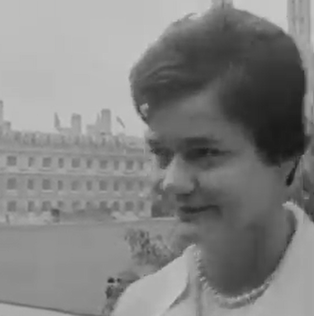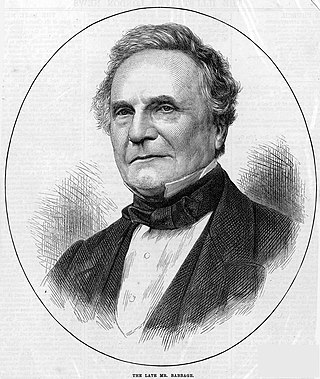Related Research Articles

The Institute of Electrical and Electronics Engineers (IEEE) is a 501(c)(3) professional association for electronics engineering, electrical engineering, and other related disciplines with its corporate office in New York City and its operations center in Piscataway, New Jersey. The IEEE was formed from the amalgamation of the American Institute of Electrical Engineers and the Institute of Radio Engineers in 1963.

The Institution of Electrical Engineers (IEE) was a British professional organisation of electronics, electrical, manufacturing, and information technology professionals, especially electrical engineers. It began in 1871 as the Society of Telegraph Engineers. In 2006, it changed its name to the Institution of Engineering and Technology (IET).
The Institution of Incorporated Engineers (IIE) was a multidisciplinary engineering institution in the United Kingdom. In 2006 it merged with the Institution of Electrical Engineers (IEE) to form the Institution of Engineering and Technology (IET). Before the merger the IIE had approximately 40,000 members. The IET is now the second largest engineering society in the world next to the IEEE. The IET has the authority to establish professional registration of engineers through the Engineering Council. The IEEE does not have the authority to replicate the registration process in its complementary environment.

The Institution of Engineering and Technology (IET) is a multidisciplinary professional engineering institution. The IET was formed in 2006 from two separate institutions: the Institution of Electrical Engineers (IEE), dating back to 1871, and the Institution of Incorporated Engineers (IIE) dating back to 1884. Its worldwide membership is currently in excess of 158,000 in 153 countries. The IET's main offices are in Savoy Place in London, England, and at Michael Faraday House in Stevenage, England.
The Society of Engineers was a British learned society established in 1854. It was the first society to issue the professional title of Incorporated Engineer. It merged with the Institution of Incorporated Engineers (IIE) in 2005, and in 2006 the merged body joined with the Institution of Electrical Engineers to become the Institution of Engineering and Technology.
Bruce Raymond Davis is an electronic engineer, notable for his research in mobile communication systems, satellite communications, and high frequency data communication systems.

The Telford Medal is a prize awarded by the British Institution of Civil Engineers (ICE) for a paper or series of papers. It was introduced in 1835 following a bequest made by Thomas Telford, the ICE's first president. It can be awarded in gold, silver or bronze; the Telford Gold Medal is the highest award the institution can bestow.
IEEE Xplore digital library is a research database for discovery and access to journal articles, conference proceedings, technical standards, and related materials on computer science, electrical engineering and electronics, and allied fields. It contains material published mainly by the Institute of Electrical and Electronics Engineers (IEEE) and other partner publishers. IEEE Xplore provides web access to more than 5 million documents from publications in computer science, electrical engineering, electronics and allied fields. Its documents and other materials comprise more than 300 peer-reviewed journals, more than 1,900 global conferences, more than 11,000 technical standards, almost 5,000 ebooks, and over 500 online courses. Approximately 20,000 new documents are added each month. Anyone can search IEEE Xplore and find bibliographic records and abstracts for its contents, while access to full-text documents may require an individual or institutional subscription.
Artificial dielectrics are fabricated composite materials, often consisting of arrays of conductive shapes or particles in a nonconductive support matrix, designed to have specific electromagnetic properties similar to dielectrics. As long as the lattice spacing is smaller than a wavelength, these substances can refract and diffract electromagnetic waves, and are used to make lenses, diffraction gratings, mirrors, and polarizers for microwaves. These were first conceptualized, constructed and deployed for interaction in the microwave frequency range in the 1940s and 1950s. The constructed medium, the artificial dielectric, has an effective permittivity and effective permeability, as intended.

Roy Billinton is a Canadian scholar and a Distinguished Emeritus Professor at the University of Saskatchewan, Saskatoon, Saskatchewan, Canada. In 2008, Billinton won the IEEE Canada Electric Power Medal for his research and application of reliability concepts in electric power system. In 2007, Billinton was elected a Foreign Associate of the United States National Academy of Engineering for "contributions to teaching, research and application of reliability engineering in electric power generation, transmission, and distribution systems."
Vakkaleri Narayana Rao was an Indian defence scientist and one of the pioneers of Electronic Warfare in India. He was a former director of the Defence Electronics Research Laboratory, Hyderabad. The Government of India awarded him the fourth highest Indian civilian honour of Padma Shri in 1982.

IET Software is a peer-reviewed scientific journal on software engineering and related issues, published by the Institution of Engineering and Technology (IET) in the United Kingdom.
Suhash Chandra Dutta Roy is an Indian electrical engineer and a former professor and head of the department of electrical engineering at the Indian Institute of Technology, Delhi. He is known for his studies on analog and digital signal processing and is an elected fellow of all the three major Indian science academies viz. Indian Academy of Sciences, Indian National Science Academy, National Academy of Sciences, India as well as the Institute of Electrical and Electronics Engineers, Institution of Electronics and Telecommunication Engineers, Systems Society of India and Acoustical Society of India, The Council of Scientific and Industrial Research, the apex agency of the Government of India for scientific research, awarded him the Shanti Swarup Bhatnagar Prize for Science and Technology, one of the highest Indian science awards for his contributions to Engineering Sciences in 1981.
John Mavor was a pioneer in the design of MOS transistors and Charge-Coupled Devices (CCDs) for signal processing. During his career as an educator and researcher at the University of Edinburgh he was appointed Professor before becoming Dean of the Faculty of Science and Engineering. He was subsequently appointed as Principal and Vice-Chancellor at Edinburgh Napier University.

Stepan Lucyszyn FREng, FIEEE is a British engineer, inventor and technologist, and has been a Professor of Millimetre-wave Systems at Imperial College London, England, since 2016. He was elevated to Fellow of the Institute of Electrical and Electronics Engineers (IEEE) in 2014 and elected to Fellow of the Royal Academy of Engineering (RAEng) in 2023. Lucyszyn's research has mainly focused on monolithic microwave integrated circuits (MMICs), radio frequency microelectromechnical systems, wireless power transfer (WPT), thermal infrared technologies and additive manufacturing.

Elizabeth Laverick was a British engineer who became technical director of Elliott Automation Radar Systems. Laverick was the first female deputy secretary of the Institution of Electrical Engineers and president of the Women's Engineering Society. She was the first woman to receive a PhD in a scientific curriculum at Durham University, and was appointed an OBE in 1993.
Proceedings of the Institution of Electrical Engineers was a series journals which published the proceedings of the Institution of Electrical Engineers. It was originally established as the Journal of the Society of Telegraph Engineers in 1872, and was known under several titles over the years, such as Journal of the Institution of Electrical Engineers, Proceedings of the IEE and IEE Proceedings.

The Charles Babbage Premium was an annual award "for an outstanding paper on the design or use of electronic computers".
Albert Smiley Hoagland had a long career on the development of hard disk drives (HDD) starting with the IBM RAMAC. From 1956 to 1984, he was with IBM in San Jose, California, and then, from 1984 to 2005, he was the director of the Institute for Information Storage Technology at Santa Clara University. He wrote the first book on Digital Magnetic Recording. Hoagland played a central role in the preservation and restoration of the IBM RAMAC now displayed at the Computer History Museum, Mountain View, California. He died in Portland, Oregon, on 1st October 2022.
References
- 1 2 "The British Institution of Radio Engineers". Nature. 158 (4013): 444–445. 1946. Bibcode:1946Natur.158T.444.. doi: 10.1038/158444d0 .
- 1 2 3 "The institution of electronic and radio engineers". IEE-IERE Proceedings - India. 15: 1. 1977. doi:10.1049/iipi.1977.0001.
- ↑ "British Institution of Radio Engineers: Twenty-first Anniversary". Nature. 158 (4019): 660. 1946. Bibcode:1946Natur.158R.660.. doi: 10.1038/158660b0 .
- ↑ Radio Engineers, Journal of the British Institution of, IEEE Xplore.
- ↑ Radio Engineers, Proceedings of the British Institution of, IEEE Xplore.
- ↑ "Charles Babbage Premium". The Journal of the British Institution of Radio Engineers. British Institution of Radio Engineers. 19 (1): 132, 134. 1959. Retrieved 20 April 2020.
- ↑ Webster, Valerie J., ed. (1999). Charles Babbage Premium. pp. 544, 547. ISBN 978-0787615024.
{{cite book}}:|work=ignored (help)